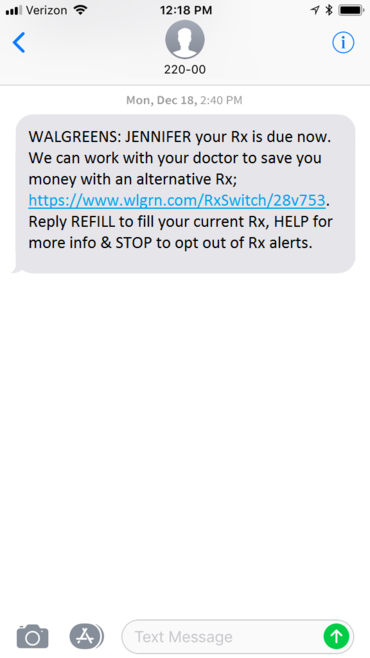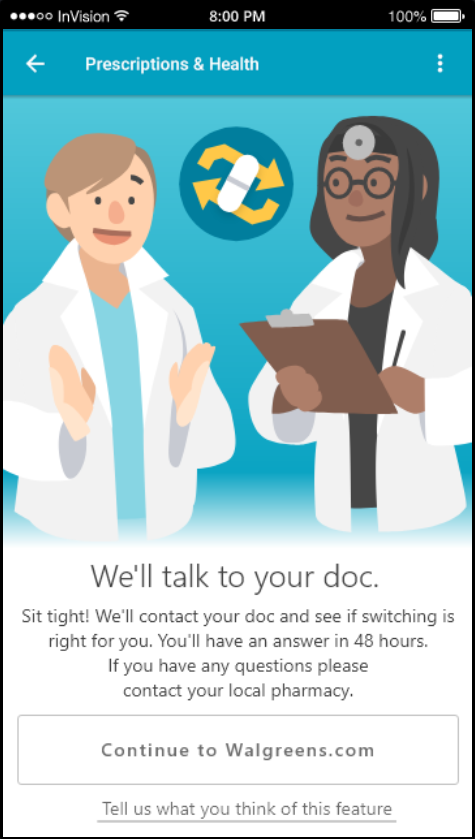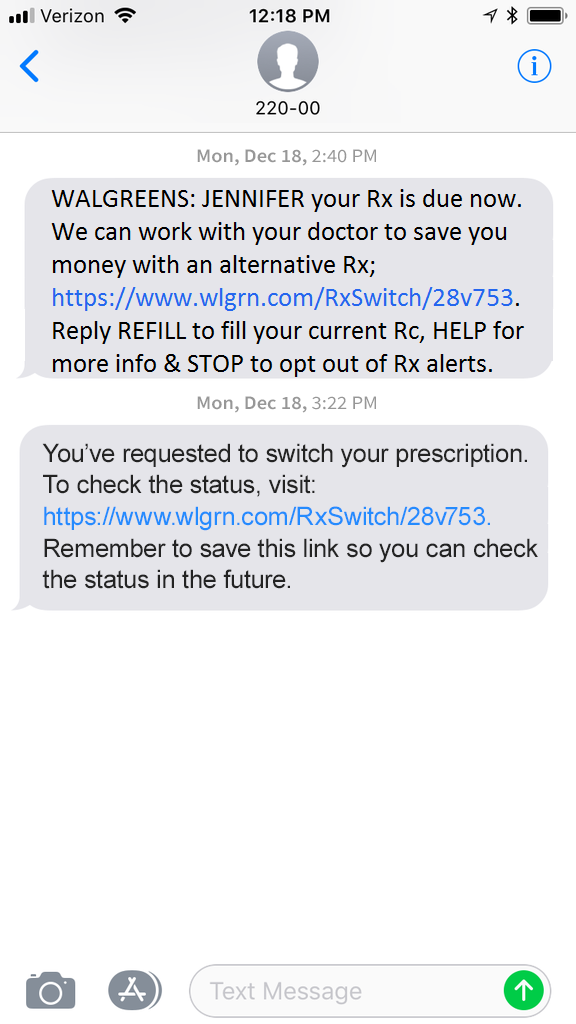Walgreens - Rx Cost Advisor Validation
Background
Walgreens was in the process of building an SMS-based service that allowed patients with prescriptions costing $50 or more to switch to another prescription that did the same thing, but cost less based on their insurance.
In this service, the patient could request a lower-cost prescription, their doctor would be consulted, they would receive the status of their doctor’s approval, then their pharmacy would be notified to fill this new prescription.
This usability study was conducted after 2 rounds of concept evaluation research with both patients and doctors.
Study Goals
Test our initial experience hypotheses of surfacing alternative prescriptions in a real-world context to learn if our design aligned to how users perceived this service.
Research Methods
Remote unmoderated sessions using UserZoom
Allowed participants to choose their own path, if they wanted to “switch prescriptions” or not
Recruited 30 participants to aim for at least 8 participants to receive a final status of “accepted”, “timed out”, or “denied”
Work Partners
Product managers
UX designer
Visual designer
Copywriter
Service designer
Software engineers
My Role
Selected method
Suggested recruiting criteria and drafted screener
Worked with team to identify research questions
Drafted research tasks within UserZoom
Conducted analysis and wrote findings report alongside service designer





Participants
Recruited 30 participants to aim for at least 8 participants to receive a final status of “accepted”, “timed out”, or “denied”
Allowed participants to choose their own path, if they wanted to “switch prescriptions” or not
Have experienced inquiring about the cost of their prescription at the pharmacy
Currently pay $50 or more for a prescription
Comfortable using a smartphone
Owns or shares responsibility to order and pick up prescriptions
Key Research Questions
What questions or concerns do patients have about this service?
How many patients would choose to switch medications through this service unprompted?
What additional information should be provided about this service?
Key Findings
People wanted more details to understand why unhappy paths occurred.
When a request was denied, people wanted to know why their switch wasn’t approved.
When a doctor didn’t respond to a request, most patients didn’t know what it meant to “not hear back in time”.
Unhappy paths are a dead end today and patients want us to take them a step further.
After a request was denied or timed-out, people felt they were given false hope in getting a cheaper medication.
In the event of an unhappy path, most patients wanted another way to approve a lower-cost alternative.
Some assumed they could try switching again on their next refill, and would stick with their original prescription for now.
Most incorrectly thought their original Rx was being filled in a denial or timeout.
The majority of unhappy path participants would have been waiting for a notification that their original prescription was ready to be picked up, not knowing they needed to take action.
Impact
UX and content designers provided more details around why unhappy path outcomes occurred, and provided next steps to move forward.
The product team built in a feature to resend patients the option to switch medications next month if they originally opted-out.
UX and content designers added language to the unhappy paths to let patients know that if their request to switch medications didn’t go through, they still need to request a refill for their original prescription.
Hindsight is 20/20
It would have been beneficial for future iterations of the patient experience and the prescriber experience if our electronic medical records (EMR) partner was involved in this research.



